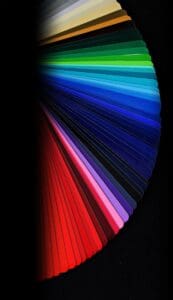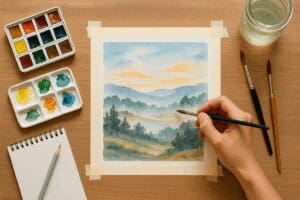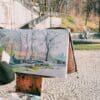Surfaces in Art: Using Techniques like Impasto and Sgraffito
Introduction:
Artists have long explored the diverse surfaces of their canvases, experimenting with techniques that add texture, depth, and visual interest to their work. Two such techniques, impasto and sgraffito, have been employed by artists throughout history to create captivating surfaces that engage the viewer’s senses. In this article, we’ll delve into the world of surface techniques in art, exploring the principles behind impasto and sgraffito, and how artists can use them to elevate their creations.
Understanding Impasto:
Impasto is a painting technique characterized by the thick application of paint onto the canvas, creating a textured surface that is visually striking and tactile. This technique allows artists to sculpt and mold the paint directly on the canvas, adding dimension and depth to their work. Impasto can be achieved using various painting mediums, including oil, acrylic, and even watercolor, each offering unique textures and effects.
Key Aspects of Impasto:
1. Thick Application: The hallmark of impasto is the generous application of paint onto the canvas, often using a palette knife or brush with stiff bristles. Artists may apply multiple layers of paint, building up texture and volume to create a three-dimensional effect.
2. Visible Brushstrokes: Unlike traditional painting techniques where brushstrokes are smoothed out, impasto embraces the visible texture of the brushstrokes, adding energy and movement to the artwork. Artists can experiment with different brush sizes and strokes to achieve varying textures and patterns.
3. Palette Knife Techniques: Palette knives are indispensable tools for impasto painting, allowing artists to apply paint with precision and control. By scraping, dabbing, and spreading paint with a palette knife, artists can create intricate textures and sculptural effects on the canvas.
4. Mixing Mediums: While oil paint is commonly associated with impasto due to its thick consistency and slow drying time, artists can also achieve impasto effects with acrylic and other painting mediums. Acrylics offer the advantage of quick drying times, allowing artists to build up layers of texture more rapidly.
Exploring Sgraffito:
Sgraffito is a technique that involves scratching or incising into a layer of wet paint to reveal the layers beneath, creating intricate patterns and designs. Originating in ancient Greece and popularized during the Renaissance, sgraffito has been used in various art forms, including painting, ceramics, and printmaking. This technique adds visual interest and complexity to the surface of the artwork, inviting viewers to explore the layers beneath the surface.
Key Aspects of Sgraffito:
1. Incising Techniques: Sgraffito artists use a variety of tools, such as brushes, needles, or even toothpicks, to scratch into the wet paint layer and reveal the underlying colors or textures. This process requires precision and control to create intricate patterns and designs.
2. Layering Effects: Sgraffito relies on the contrast between the top layer of paint and the layers beneath to create depth and dimension. Artists can experiment with different colors and opacities to achieve striking visual effects when the top layer is scratched away.
3. Textural Variations: By varying the pressure and angle of the incising tool, artists can create a range of textures and patterns in the sgraffito surface. From delicate lines to bold grooves, sgraffito offers endless possibilities for creative expression.
4. Combining Techniques: Sgraffito can be combined with other painting techniques, such as impasto or glazing, to create layered, multidimensional artworks. Artists can use sgraffito to add detail and refinement to impasto textures or to create contrast between smooth and textured areas.
Conclusion:
Surface techniques like impasto and sgraffito offer artists innovative ways to explore texture, depth, and visual interest in their artwork. Whether it’s the thick, sculptural strokes of impasto or the delicate incisions of sgraffito, these techniques add a tactile element to the canvas, inviting viewers to engage with the artwork on a deeper level. By mastering these techniques and experimenting with different mediums and tools, artists can unlock new dimensions of creativity and expression in their work.
References:
1. “Impasto Painting Techniques” – Winsor & Newton.
2. “The Art of Sgraffito” – Jackson’s Art Supplies.
3. “Impasto Painting: Techniques, Tips, and Tricks” – Artistro.
*For collaborations, art features, or inquiries, please contact us at [email protected]. Don’t forget to follow us on Instagram, Facebook, Twitter.
Disclaimer: The views and opinions expressed in this article do not necessarily reflect the official policy or position of Irish Artmart.




